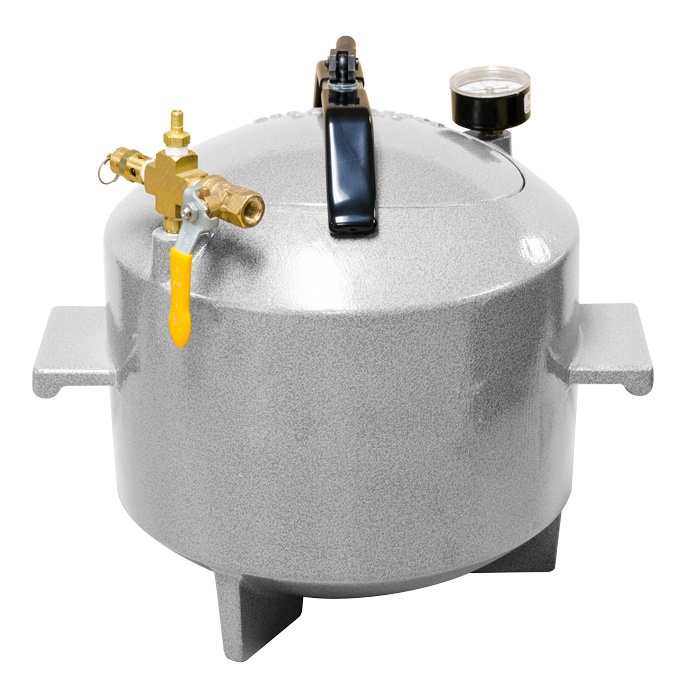 The use of the condensing power of air pressure has been around for decades. We have used these “pressure pots” in the culinary arts to rapidly cook all kinds of meats and vegetables; including Colonel Sanders famous Kentucky Fried Chicken (perhaps you have one of these units ‘modified’ for lab use…).
The use of the condensing power of air pressure has been around for decades. We have used these “pressure pots” in the culinary arts to rapidly cook all kinds of meats and vegetables; including Colonel Sanders famous Kentucky Fried Chicken (perhaps you have one of these units ‘modified’ for lab use…).
The science behind the application of pressure is seldom discussed in dentistry. We only know from our literature that when air pressure is used prior to or during the cure of acrylic materials it produces a more bubble free and more dense finished product. This is all correct but there are other uses for this science.
Technicians in the C&B and Ceramics world know that the Zirconia material they are currently using undergo a pressure event to create the blocks or pucks that they mill. But most are unaware that there are two types of pressure exerted on the disc by the most ethical companies. The first is axial pressure. This is the same type of force that a denture technician would use in a flask press, forcing parts together in one direction of pressure. The other type of pressure is called CIP (Cold Isostatic Pressing) which presses from all angles using air pressure on a liquid in which the object is suspended. A common Laboratory pressure pot is essentially a CIP press.
In Crown and Bridge we can also use this type of a pressure pot to reduce bubbles when investing milled or waxed patterns with either Gypsum or Phosphate investments (i.e., BEGO Pressure Vessel), and to cure temporary acrylic materials, bite splints, mouth guards or surgical guides. Most of these later materials are created with Monomer/Polymer type acrylics and are cured at 20 psi1 in the pressure pot (i.e., Lang or Others).
 Since the vast majority of materials seem to cure at the 20psi mark, the question has to be asked, why is it necessary for a high pressure pot?
Since the vast majority of materials seem to cure at the 20psi mark, the question has to be asked, why is it necessary for a high pressure pot?
With the introduction of the PREFERENCE Soft Denture Liner, it was necessary to produce a sustained pressure of 80psi over a 14 hour time frame to properly cure the silicone material. The use of this comparatively high pressure is necessary for primarily three distinct reasons:
- First of all the Silicone material is a viscus material that needs the pressure to find its way into all of the intimate recesses of the master model, including the rugae area of the maxilla and other soft tissue folds.
- Second, it increases the density of the finished product2, reducing its pores and giving it a longer functional life, in addition reducing the penetration of bacteria or funguses (such as Candida albicans), while giving the patient the ability to use a toothbrush to effectively debride or clean the liner. This is perhaps the greatest problem associated with soft liners3.
- Third, it helps insure that the covalent bond between the polymerized resin base (acrylic), the bonding agent (primer) and the Silicone have maximum adhesive qualities which aid in prevention of delamination of the soft liner from the base.
Whether you use the PREFERENCE soft reline material or not, the curing of materials associated with higher pressures when appropriate, renders these materials in general a better set of physical properties and improved performance.
A Pressure pot should then be a common tool in any dental laboratory, with those that can be used at multiple pressure levels, both high and low being the more valuable.
About the Author
 Lorena Lighthart is the Product Manager for the Clinical products division at Whip Mix. She has worked in the dental industry for over 30 years. Lorena works with a myriad of experts in the field to bring new products to market that support functional occlusion, esthetics, and healthy sleep. She can be reached at llighthart@whipmix.com.
Lorena Lighthart is the Product Manager for the Clinical products division at Whip Mix. She has worked in the dental industry for over 30 years. Lorena works with a myriad of experts in the field to bring new products to market that support functional occlusion, esthetics, and healthy sleep. She can be reached at llighthart@whipmix.com.
